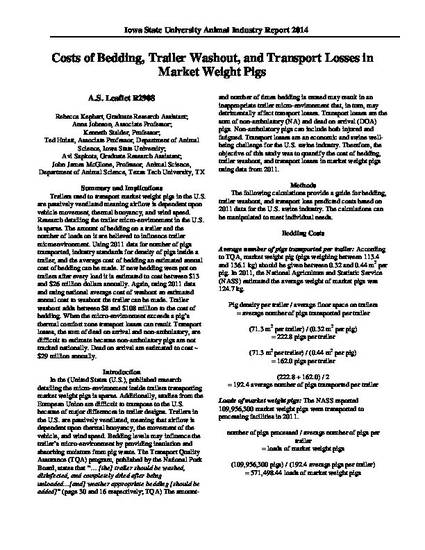
Trailers used to transport market weight pigs in the U.S. are passively ventilated meaning airflow is dependent upon vehicle movement, thermal buoyancy, and wind speed. Research detailing the trailer micro-environment in the U.S. is sparse. The amount of bedding on a trailer and the number of loads on it are believed to influence trailer microenvironment. Using 2011 data for number of pigs transported, industry standards for density of pigs inside a trailer, and the average cost of bedding an estimated annual cost of bedding can be made. If new bedding were put on trailers after every load it is estimated to cost between $13 and $26 million dollars annually. Again, using 2011 data and using national average cost of washout an estimated annual cost to washout the trailer can be made. Trailer washout adds between $8 and $108 million to the cost of bedding. When the micro-environment exceeds a pig’s thermal comfort zone transport losses can result. Transport losses, the sum of dead on arrival and non-ambulatory, are difficult to estimate because non-ambulatory pigs are not tracked nationally. Dead on arrival are estimated to cost ~ $29 million annually.
Available at: http://works.bepress.com/kenneth_stalder/97/
